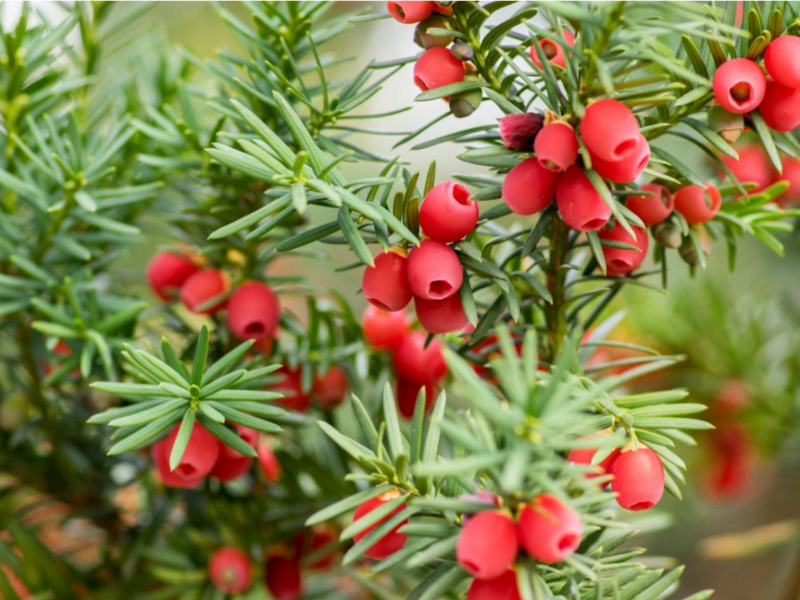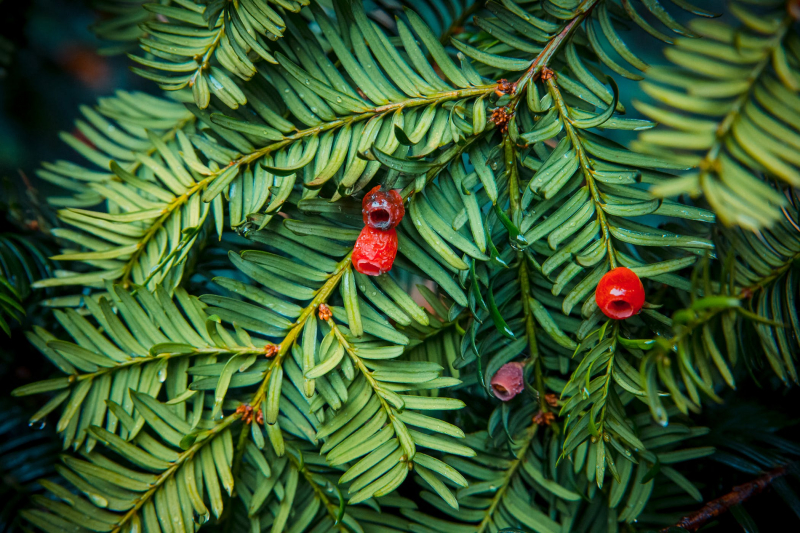Yew
Yew trees have traditionally been used as morbid allegories. It was linked by the ancient Greeks to Hades, the Furies, and Hecate, the goddess of witchcraft, necromancy, and ghosts. Its significance to the ancient Druids as a symbol of immortality may account for its prevalence in English churchyards, many of which were constructed on former pagan locations. According to an old myth, the tree ingested vapors from underground corpses to create poison.
Yew is the wood of preference for magic wands and royal staffs, such as the rod of office in the Highlands, because it represents a representation of eternal life and mystical power. Ironically, however, even addressing it can prove fatal over time. This is purportedly how medieval longbow craftsmen were poisoned.
Yew poisoning can cause tremors, respiratory problems, and, most dangerously, heart failure severe enough to kill a moose. Because the poison acts so quickly after ingestion, dead animals are frequently discovered with the leaves still partially in their mouths. Another factor contributing to its prevalence in cemeteries is that it can decimate entire herds, deterring grazing animals from consuming it (though usually, they know to avoid it).
Why then do they continue to eat it? According to its creator, yew berry tart is the vegan version of fugu. Surprisingly, the berries are not harmful, but the leaves, bark, wood, and seeds are. They are actually quite good, but using them in the kitchen is dangerous. The lethal taxine B of the tree is only found in the seed's interior; only the flesh or aril is edible.
(By the way, atropine might help if you ever get nausea when grazing in an English churchyard. You could just feel healthy enough to dig your own grave if you follow the yew with some poisonous nightshade.)









